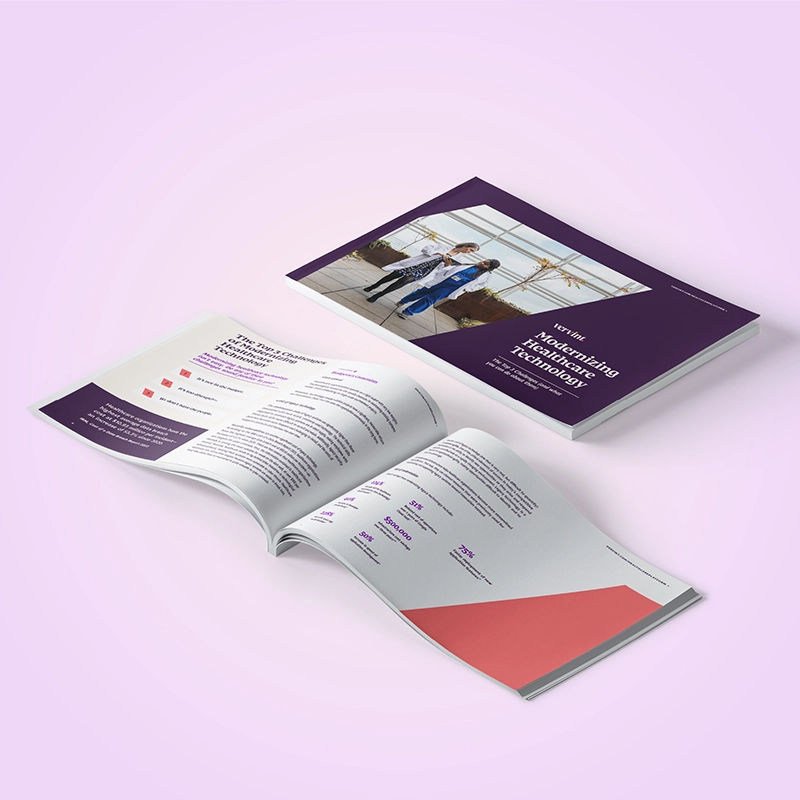Administrative Applications of AI in Healthcare
Many recent investigations into the ways that artificial intelligence can improve healthcare focus on clinical applications or medical devices. However, these applications miss the real, immediate value that AI can contribute to healthcare organizations by transforming administration.
Administrative applications of AI in healthcare improve outcomes for patients, employees, and healthcare organizations.
AI significantly impacts administrative tasks by automating repetitive and time-consuming activities, such as appointment scheduling, billing, and claims processing. This automation not only saves valuable time but also reduces errors and improves efficiency.
Using AI to Reduce Staff Burnout
The administrative burden on healthcare workers diverts critical resources from patient care to paperwork. Healthcare administrative tasks consume an estimated $1 trillion per year, and this amount includes not only the hours spent by back-office workers but also the 20 hours per week doctors report spending on admin tasks.
“Inefficient work processes, burdensome documentation requirements, and limited autonomy result in negative patient outcomes, a loss of meaning at work, and health worker burnout.” – Vivek H. Murthy, M.D., M.B.A., U.S. Surgeon General.
Burnout is a significant issue in the industry, particularly due to its link to a worsening shortage of healthcare workers. The administrative burden is a major contributor to burnout. AI can alleviate the administrative burden on healthcare workers, reducing burnout and channeling resources from paperwork to better patient outcomes.

Scale and Optimize Healthcare Workloads in the Cloud
Healthcare organizations need flexible, scalable and simple solutions for running enterprise workloads. But successfully — and quickly — deploying or migrating to the cloud requires a strong foundation.
Use Case: AI for Appointment Scheduling
Automating appointment scheduling and reminders with AI is beneficial to patients and providers. AI-powered systems analyze patient preferences, availability, and medical history to schedule appointments automatically, reducing the burden on administrative staff. Additionally, AI can send automated reminders to patients, reducing missed appointments and improving overall patient satisfaction.
One study found that using AI for appointment scheduling reduced missed appointments by nearly 25%, while another measured a cost reduction of 15% to 40% from using AI-optimized scheduling.13

Healthcare and AI: Systems of Scalable Empathy
Combining scalability and putting people at the heart gives us a new opportunity: to create systems of scalable empathy.
Use Case: AI for Patient Communication
AI-powered chatbots and virtual assistants are being increasingly utilized for patient communication. These tools can manage routine inquiries, provide information about services, and send reminders for upcoming appointments or medication schedules. This not only boosts patient engagement but also allows staff to concentrate on more critical tasks.
Concerned about the ability of AI-powered chatbots to provide quality, empathetic responses to patient questions? A recent study from the University of San Diego found that patients in a blind study preferred chatbot responses over those of actual doctors 78.6% of the time! Responses were rated both for quality of information provided and the empathy of the response.2
Use Case: AI for Staffing
One of the main challenges in healthcare staffing is managing unpredictable demand. An emergency often requires more staff than anticipated, leaving workers understaffed and stressed. However, overstaffing to cushion demand surges is inefficient, expensive, and detrimental to worker mental health.
AI analyzes historical data, patient demand, and staff availability to identify patterns and improve forecasting accuracy. With this technology, healthcare systems can efficiently allocate resources and effectively utilize equipment, rooms, and staff, minimizing waste and maximizing patient care.

Innovating for Patients and Providers at University of Michigan Health-West
University of Michigan Health-West has delivered many “firsts” in healthcare in the region. Our partnership helped in driving tech innovation that benefits patients and providers.
Use Case: AI for Data Entry
One of the more tedious and inefficient administrative tasks in healthcare is data entry. However, a combination of technologies that incorporate artificial intelligence including Natural Language Processing (NLP), Optical Character Recognition (OCR), and Robotic Process Automation (RPA) can be combined to reduce the amount of data entry required of healthcare staff. For example, AI systems can automatically extract relevant information from documents like medical records and insurance forms, standardize and format data, and store it in databases where it can be retrieved as needed.
Using AI for data entry in healthcare helps to improve the efficiency and accuracy of these processes, resulting in significant cost savings and allowing for resources to be dedicated to improving patient outcomes.
The administrative applications of AI in healthcare are transforming the industry by addressing one of its most pressing challenges: staff burnout. By automating repetitive and time-consuming tasks such as appointment scheduling, billing, claims processing, and data entry, AI significantly reduces the administrative burden on healthcare workers. This not only enhances operational efficiency but also allows healthcare professionals to focus more on patient care, ultimately leading to better patient outcomes.
AI’s ability to improve appointment scheduling and patient communication ensures higher patient satisfaction and engagement. Moreover, AI-driven staffing solutions help healthcare organizations manage unpredictable demand more effectively. This reduces both
stress and inefficiency. With technologies like Natural Language Processing (NLP), Optical Character Recognition (OCR), and Robotic Process Automation (RPA), AI also enhances data entry processes, improving accuracy and saving costs.
As AI continues to evolve, its role in healthcare administration will likely expand, offering even more innovative solutions to alleviate the pressures on healthcare workers and improve the overall efficiency and effectiveness of healthcare delivery. By embracing these technologies, healthcare organizations can create a more sustainable, patient-centered, and supportive environment for both staff and patients.
Ready for a further explanation on artificial intelligence applications in the healthcare industry? Read Part Two: Improving the Patient Experience!
- https://www.ncbi.nlm.nih.gov/pmc/articles/PMC11047988 ↩︎
- https://www.ncbi.nlm.nih.gov/pmc/articles/PMC10148230/ ↩︎

3 Challenges in Modernizing Healthcare Technology
Many healthcare organizations are faced with the urgent requirement to update legacy technology to help their businesses succeed in a competitive environment.


